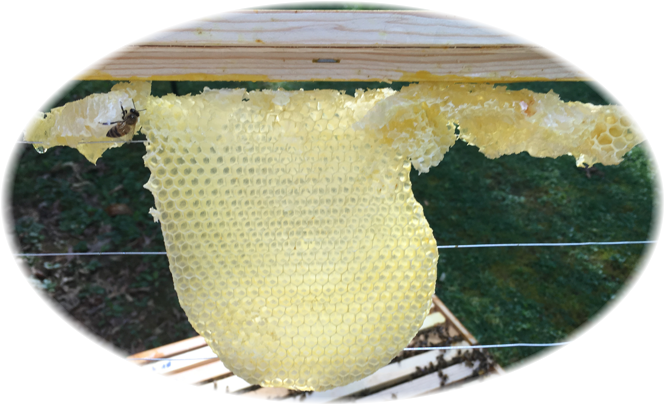

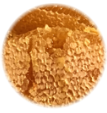
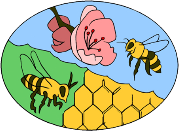

Storm Preparation -
Hi everyone,
The uncertainty of tracking of hurricanes leads us to some important considerations for beekeepers who may be affected by the heavy rain and winds. Please disseminate to your local network of beekeepers, concerning these tips for keeping your hive safe.
First, make sure hive equipment is secured to resist strong winds. A simple brick on the top-lid may be insufficient to keep it from flying off in winds above 50 mph. A lid-less hive causes problems for the bees by introducing moisture and letting precious heat escape. Strapping the lid down or securing with duct tape might be in order, particularly for outlying yards. The same is true for hive boxes, particularly if they are relatively new (i.e., the bees have not yet propolized them together sufficiently).
Second, make sure each hive is setting on sturdy stands or level ground. Entire beehives can be blown over by strong winds, particularly when they are tall with many honey supers or are otherwise top heavy. If the hives are on tall or insecure stands, you can move them onto (dry) level ground temporarily to lessen the chances that they topple.
Third, make sure the hives are not in low-lying areas, or those prone to flooding. River banks can be useful apiary locations because of their proximity to fresh water, but in flooding conditions entire apiaries can be tragically swept away. Thus, move all beehives located in flood-plains to higher ground, until the flood waters have subsided. Beehives that are sitting on the ground and in recessed areas can cause water to flood the entrances and this may even suffocate the bees, if not given an upper entrance.
Finally, following heavy rains like hurricanes, various local and state agencies have traditionally sprayed regions with stagnant water to control mosquito outbreaks. Take precautions, such insecticides can be extremely problematic for honey bees. If you are registered through the North Carolina Department of Agriculture (NCDA) & CS, you will be contacted directly if your beehives are in an area schedule to be sprayed. If you are not registered, however, the state has no means to notify you and your bees may be at risk to insecticide exposure. Please consult the Agricultural Chemical Manual for information and advice about how to mitigate exposure to pesticides.
Hope your bees stay safe and dry!
Sincerely,
Dr. David Tarpy, NCSU Apiculturist


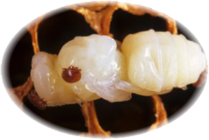
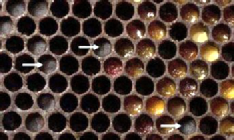
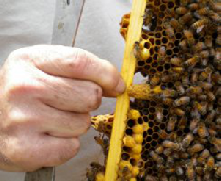
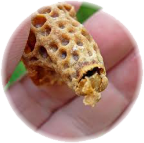
Queen cell inspection

Quickly and evenly apply beeswax to the frame.
As a new beekeeper, I have heard of others using hot-glue guns with beeswax sticks, soldering irons, and even placing pieces of wax on the frame and melting them with a long-nose lighter for adhesion. Here is a safer and easier way to accomplish this task:
- Use a “microwave proof” container and place a piece of beeswax in it.
- Cover with a paper towel and heat for about 30 seconds (see note).
- Make sure that all the frames you need to wax are ready for application of the wax.
- Take a cotton swab, dip it in the wax and apply a coating to the top inside section of the frame, as in staining a piece of wood. The wax goes on quickly and evenly and it dries in seconds.
- The whole process takes about 30 seconds or less, per frame and the melted wax will stay liquid in your container for about 8-12 minutes.
- If the wax solidifies in the container, just reheat it in the microwave and continue this process until all the applicable frames are waxed.
This process is effective whether the frames are wired or not.
Note: The microwave used in this example is a 1350 watt unit, set at normal setting. For microwaves with other wattages, you will need to observe when about half of the wax melts, then remove the wax for application.
Respectfully,
David Zachary, webmaster
One Method for Waxing Frames
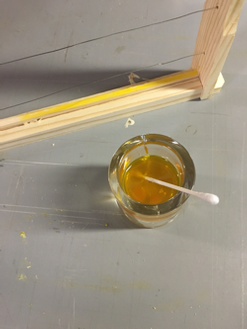
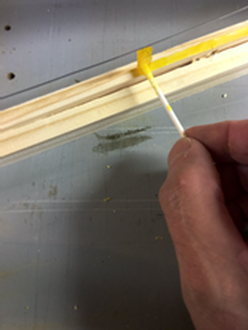
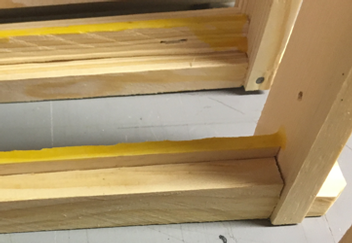
MELT in microwave
APPLY with cotton swab
ENJOY your work

New Comb- transferred from a frame of doubled comb to this new wired frame.
















